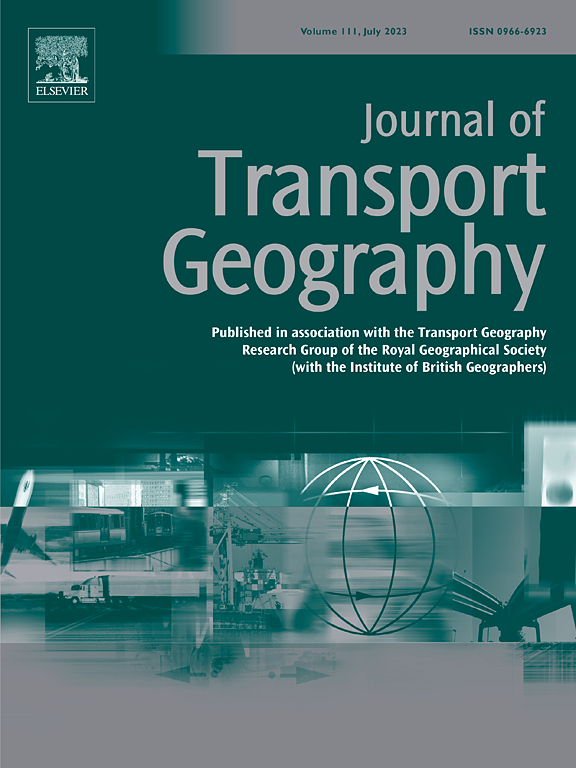Gender differences in commuting travel mode choices among young adults: A spatial heterogeneity perspective
IF 5.7
2区 工程技术
Q1 ECONOMICS
引用次数: 0
Abstract
Young adults of childbearing age (20–35), who are in the process of forming families and raising children while balancing career development, exhibit diverse commuting preferences shaped by gender and family responsibilities. This group is more influenced by family activity allocation and the built environment, resulting in a closer connection between their commuting mode choices and spatial locations. Understanding the spatial heterogeneity and gender disparities in their commuting mode choices is essential for promoting sustainable transportation policies and gender equality. Taking Guiyang, China as a case study, this study constructs a Geographically Weighted Multinomial Logit (GWMNL) model, integrating the multinomial logit (MNL) model with the geographically weighted regression (GWR), to explore the determinants of commuting mode choices among young adults of childbearing age across different spatial environments from three aspects: socio-economic characteristics, travel characteristics, and built environment features. The findings reveal significant variations in commuting behaviors between males and females across different spatial locations. For example, as working hours increase, males' choices of commuting modes vary depending on their residential location, although cars remain the overall preferred option. In contrast, females predominantly rely on cars, with only a few exceptions in certain areas. Additionally, in suburban and exurban areas with steeper terrains, young females of childbearing age are likely to reduce their car usage, in contrast to males who generally continue to favor cars. Based on these findings, we propose region-specific policy recommendations for both males and females to encourage young adults of childbearing age to adopt sustainable commuting practices.
求助全文
约1分钟内获得全文
求助全文
来源期刊

Journal of Transport Geography
Multiple-
CiteScore
11.50
自引率
11.50%
发文量
197
期刊介绍:
A major resurgence has occurred in transport geography in the wake of political and policy changes, huge transport infrastructure projects and responses to urban traffic congestion. The Journal of Transport Geography provides a central focus for developments in this rapidly expanding sub-discipline.
 求助内容:
求助内容: 应助结果提醒方式:
应助结果提醒方式:


